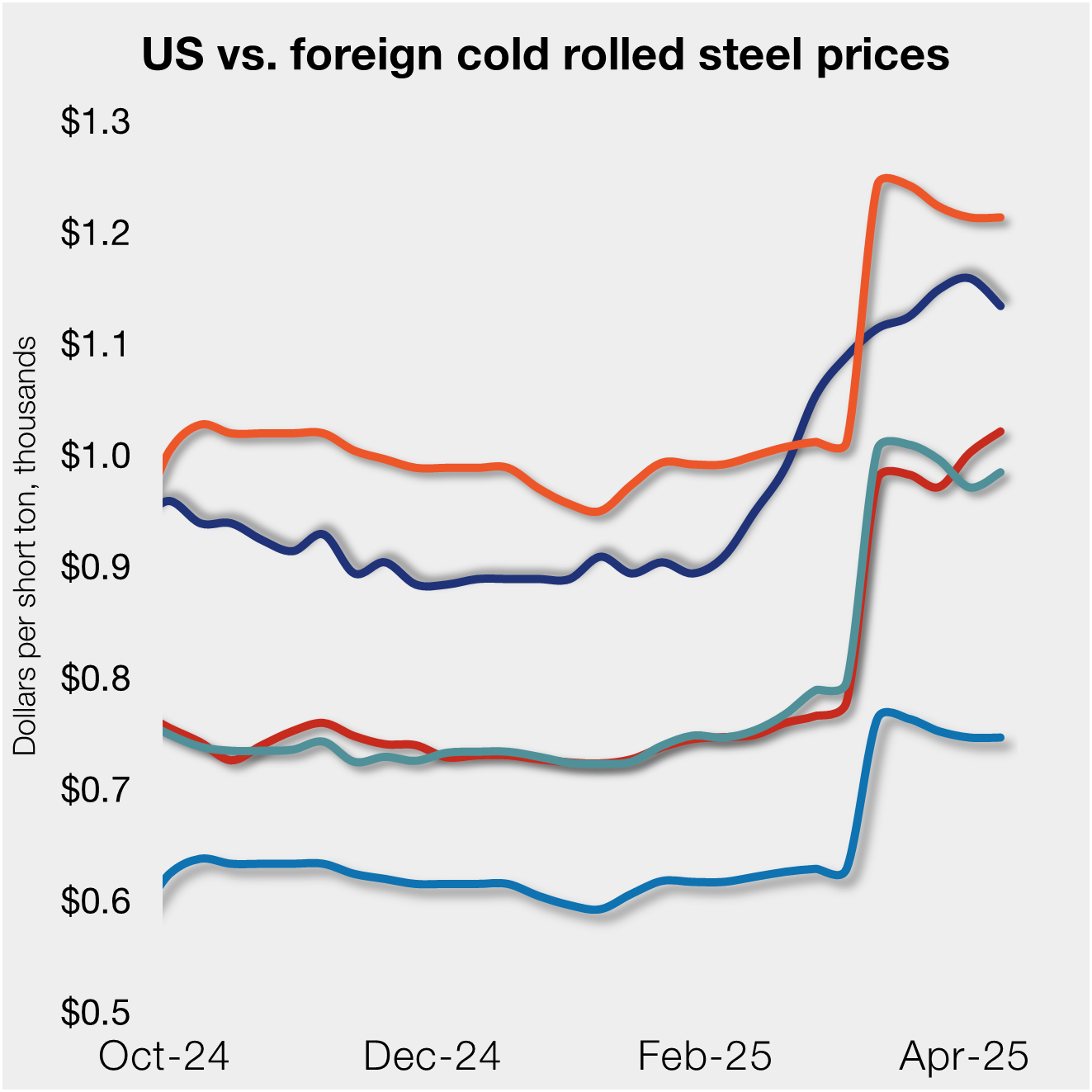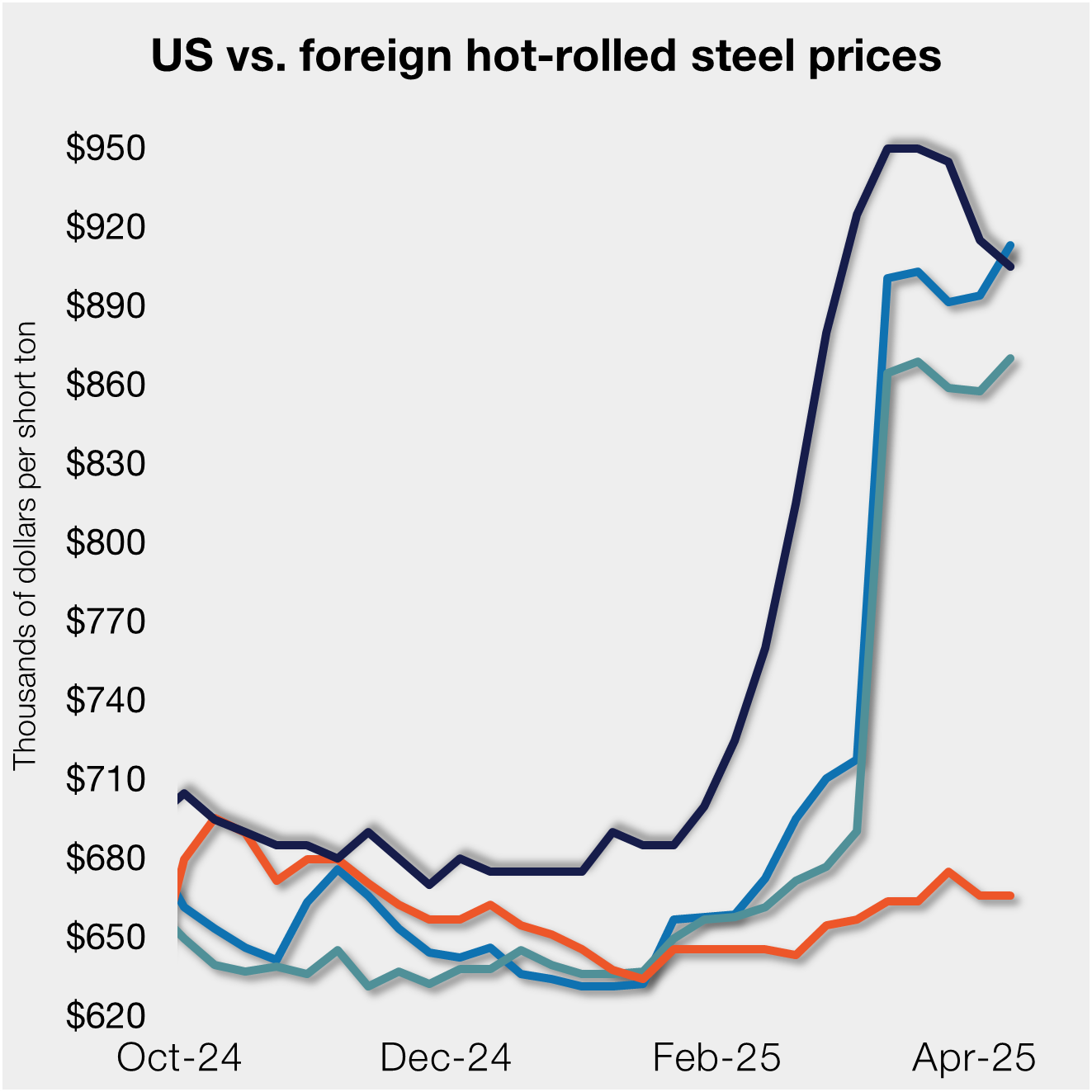Steel Products

Leibowitz: Logistical Nightmares and Trade Talks
Written by Lewis Leibowitz
January 5, 2021
“Life’s full of tough choices, innit?” Ursula, The Little Mermaid (1989)
That memorable cinematic line brings to mind the dilemmas of trade, diplomacy and national security. Economic interests sometime interfere with military and human rights considerations. Add the COVID pandemic into the mix, which has profoundly affected international commerce.
First, the changes in international trade flows have created shortages (and surpluses) in bad places. They have increased demand for ocean shipping where some governments would like it to decrease. Second, U.S. exports are ironically penalized by the shipping dislocation, with agriculture taking the brunt of the penalty. Third, as policy professionals in government and private industry grapple with what to do about China, government action becomes harder to justify.
Let’s unpack all these complex factors. The COVID pandemic, which just turned one year old, has wrought massive changes in global trade. Workers who move goods around the world and your neighborhood are correctly cast as “essential” to preserving our way of life, from basic necessities (food and clothing) to simple pleasures, like ordering green screens for Zoom backgrounds. Trade dropped forcefully last spring as lockdowns took hold and these workers got sick. But then, by midyear, trade roared back. Global trade in goods, according to the United Nations Conference on Trade and Development (UNCTAD), declined a full 10 percent from the January-March quarter in 2020 from the preceding three months. But in 2020’s third quarter, goods trade increased more than 15 percent and has remained strong.
The United States, the leading importing nation in the world, saw its total imports decrease in 2020 to a four-year low, but its exports declined even more. The result was that 2020 saw the largest U.S. merchandise trade deficit since 2010 ($678 billion). The largest merchandise trade deficit in history, ironically, occurred in 2018 at $878 billion, the year of the steel, aluminum and China tariffs.
The shipping industry, from supertankers to container ships to FedEx and UPS, suffered greatly from pandemic-induced disruptions, as did manufacturing. As trade sprang back to life beginning in June 2020, imports from Asia to North America and Europe caused hundreds of ships to pile up waiting for berthing space. As the ships finally unloaded, shipping containers in Europe and North America accumulated. They were needed back in Asia, to hold goods that Asian factories were turning out.
ARTICLE CONTINUES BELOW
{loadposition reserved_message}
This caused massive shipping dislocations, as ships were (and still are) delayed from unloading by port congestion, causing the ships to fall behind schedule, increasing costs and decreasing efficiency. Meanwhile, the factories in the Far East, which continue to fill orders, have run low on shipping containers to put them in. This has led to greater than normal price disparities between eastbound (Asia to North America) and westbound (North America to Asia) shipping rates. According to sources I’ve seen, freight rates from Asia to North America are now at about $4,000 per container, more than three times the rate one year ago. Rates from Asia to North America, which were about 2.5 times higher than westbound rates one year ago, are now six times higher.
The current low shipping rates to Asia have their own drawbacks. The second dilemma mentioned above illustrates this and has led to damage for American exporters. The demand for containers in Asia to carry goods eastbound has caused shipping lines to prefer sending containers back to Asia empty rather than filling them with American exports. U.S. agricultural exports have suffered as a result. Containers need to be cleaned and serviced to hold agricultural goods; moreover, the containers need to move to the middle of the U.S. to pick up farm exports, where most of the farms are. Filling westbound containers with U.S. exports worsens the shortage of containers in Asia.
Congress is putting pressure on the U.S. Federal Maritime Commission (FMC) to find out what the shipping lines are up to. Last week, over 100 members of Congress signed a letter, asking the FMC to hurry an investigation into reported refusals of shipping lines to carry U.S. agricultural exports. The squeeze on agriculture shipments may give China a ready excuse for not meeting their commitments to purchase U.S. goods.
Which brings me to the third dilemma facing global shipping. As everyone knows, the world relies on trade with China to satisfy consumer demand. Supply chains clearly need Chinese factories to supply a host of apparel, shoes, consumer goods, machinery, auto parts, rare earth metals, steel pipe and thousands of other goods.
But government policy makers see relations with China as perhaps a larger problem. Everyone is familiar with disputes the U.S. has with China on technology transfer, intellectual property infringement and human rights violations, creating increasing unease in many world capitals. Under President Trump, tariffs were imposed on most Chinese exports to the U.S. This was intended to encourage American companies to wean themselves away from dependence on Chinese factories and thereby to convince Chinese leaders to talk to us about rebalancing the relationship. So far, there is little evidence that this strategy has paid off. It did lead to the “Phase One” China deal, but China has fallen short of their commitments to buy more U.S. goods during 2020. See dilemmas (1) and (2) above for confirmation of the part logistics play in this failure.
The Biden administration is working on strategies to take a harder line with China on strategic and diplomatic fronts. I’ve noted before that the pressure exerted by tariffs and other restrictions will likely remain in place until new policies are formulated.
The process also includes bilateral discussions. Secretary of State Antony Blinken, Defense Secretary Lloyd Austin and the National Security Advisor will meet in Anchorage, Alaska, this week with the Foreign Minister of China, Wang Yi, and the director of China’s Office of the Central Commission for Foreign Affairs, Yang Jiechi.
The agenda for this week’s meeting is “wide ranging,” according to White House Press Secretary Jen Psaki, but will surely include a long list of significant trade and economic issues as well as military matters and human rights. The advance billing of the meeting indicates that the two sides will catalog their differences and emphasize their seriousness rather than resolving any issues.
The U.S. and China are the world’s two most powerful nations and they have a lot to discuss, from human rights in Hong Kong to cyberattacks, military bases in the South China Sea, and what China intends to do with what is now the largest navy in the world.
If increased confrontation is in the offing, as seems likely, the business communities in both countries could become collateral damage in a long and potentially bitter struggle reminiscent of the Cold War.
Lewis Leibowitz
The Law Office of Lewis E. Leibowitz
1400 16th Street, N.W.
Suite 350
Washington, D.C. 20036
Phone: (202) 776-1142
Fax: (202) 861-2924
Cell: (202) 250-1551

Lewis Leibowitz
Read more from Lewis LeibowitzLatest in Steel Products

SMU flat-rolled market survey results now available
SMU’s latest steel buyers market survey results are now available on our website to all premium members. After logging in at steelmarketupdate.com, visit the pricing and analysis tab and look under the “survey results” section for “latest survey results.” Past survey results are also available under that selection. If you need help accessing the survey results, or if […]

CRU tariff webinar replay now available
CRU’s latest webinar replay on how Trump’s tariffs affect the global steel market is now available on our website to all members. After logging in at steelmarketupdate.com, visit the community tab and look under the “previous webinars” section of the dropdown menu. You’ll find not only this special CRU webinar but also all past Community […]

US, offshore CRC prices diverge
US cold-rolled (CR) coil prices declined this week, slipping for the first time since early February. Most offshore markets deviated, moving higher this week.

Construction growth slowed in March on tariff woes: Dodge
The decline comes after reaching a record high in January to kickstart the year.

Return of S232 zapped gap between US and EU HR prices, Asian HR remains cheaper
Domestic hot-rolled (HR) coil prices declined this week for a third straight week. Most offshore markets bucked the trend and gained ground. Uncertainty in the US market around tariffs, especially after “Liberation Day,” caused US prices to slip as buyers moved to the sidelines. It’s unclear to date whether the 90-day pause on the more […]
